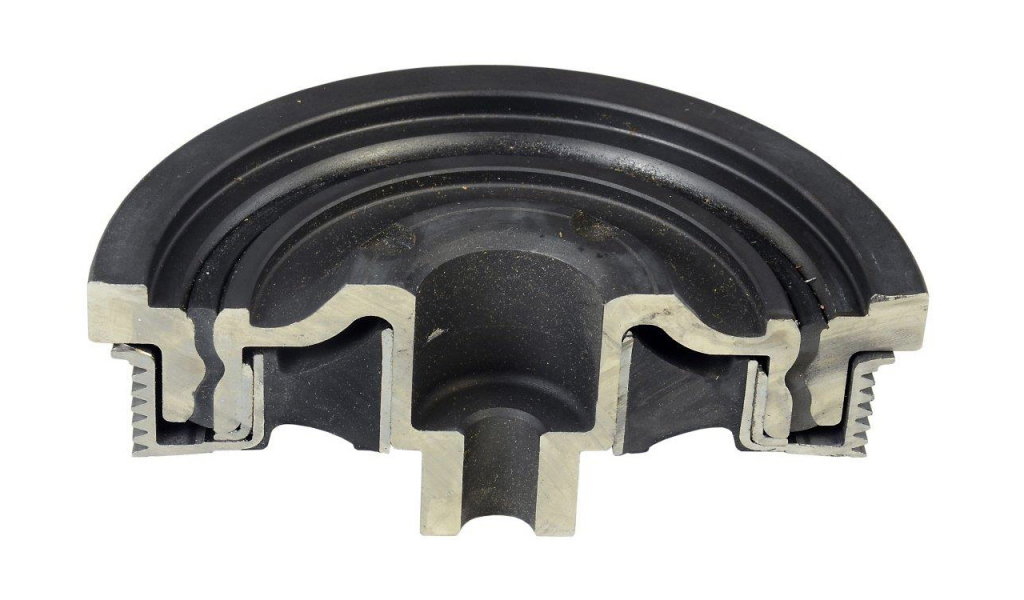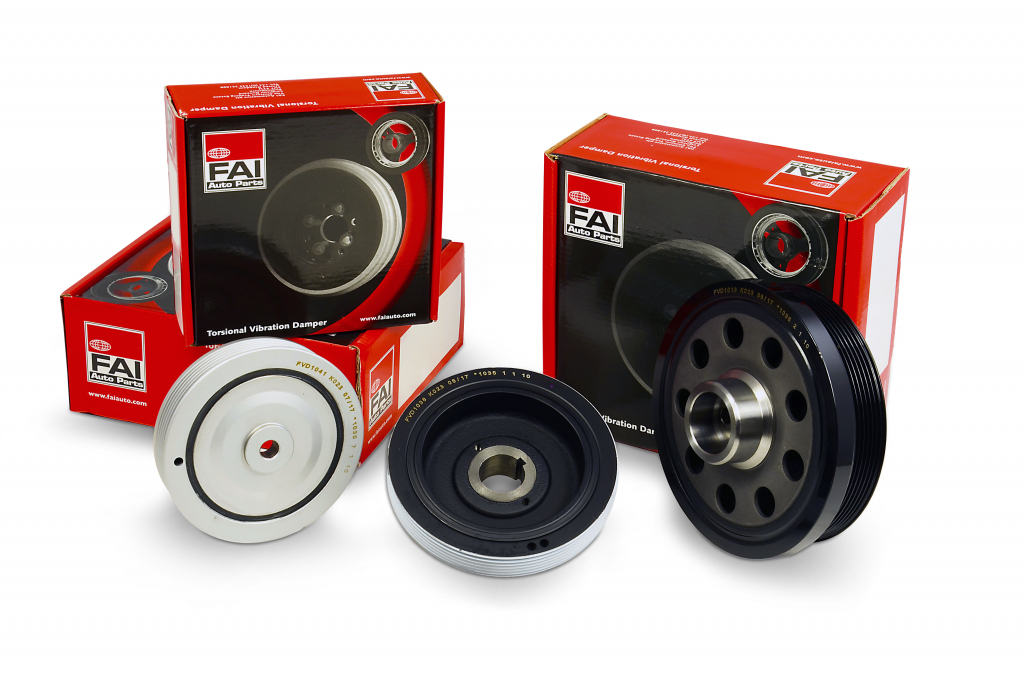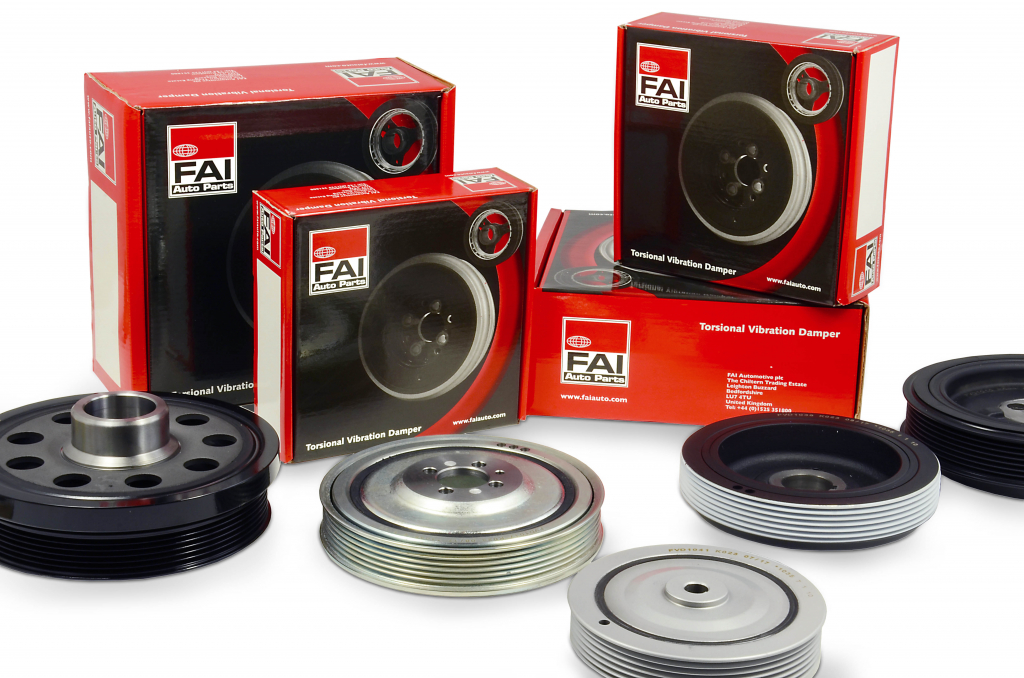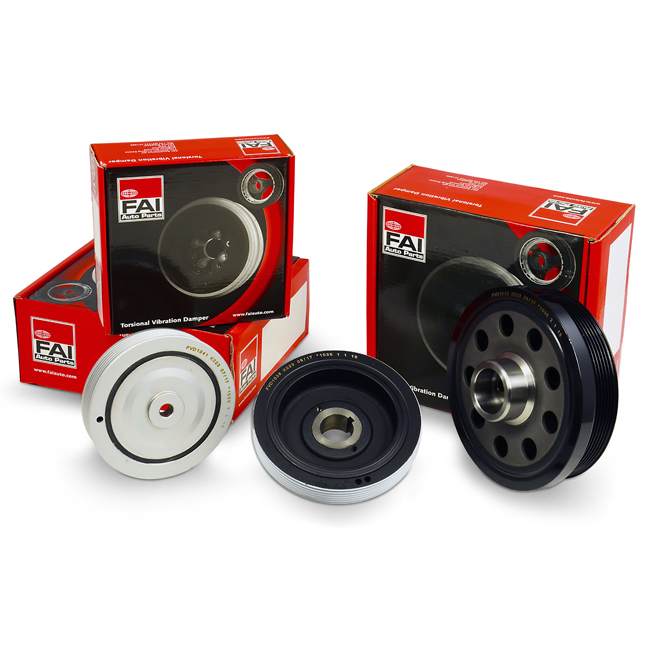FAI Launches Range of Torsional Vibration Dampers
We are proud to announce the launch of our new Torsional Vibration Damper (TVD) range. The FAI branded TVD's will supplement our existing range of bottom end engine repair products and belting range. The initial selection of nearly 50 part numbers cover all important and popular applications.
TVDs are the pulleys found at the front end of the crankshaft and are responsible for driving ancillary items such as A/C compressors, power steering pumps and water pumps. The TVD is responsible for absorbing the vibrations caused by the pistons firing, which sends vibrations through the crank and other engine parts, to minimise the damaging effects of these vibrations and prolong engine operating life.
Each pulley in the FAI TVD range is made to OE specification and includes the rubber harmonic damper element of the construction. Some other aftermarket alternatives have the rubber damper removed from the pulley; which almost certainly increases crank bearing wear, and could lead to early failure of the crank or crank bearings. As a result, we recommend that only a pulley with a harmonic damper is fitted.
Some popular items in the FAI range are:
| FAI Ref | Application |
| FVD1011 | CITROEN/PEUGEOT 1.9D/2.0 HDi |
| FVD1010 | FORD TRANSIT 2.4 TDCi |
| FVD1018 | FORD MONDEO Mk III (B5Y) 2.0/2.2 TDCi |
| FVD1006 | CITROEN/PEUGEOT 1.6 Hdi (To RP CODE 10562) |
| FVD1003 | LAND ROVER FREELANDER (LN) 2.0 Td4 4x4 |
 How does the TVD work?
How does the TVD work?
The purpose of the vibration damper is to minimise the influence of the torsional vibrations developing in the crankshaft, so that the material stresses arising from these conditions are kept within permissible limits.
The damper is composed of two elements: a steel mass and an energy dissipating element (rubber). The mass resists the acceleration of the crankshaft vibration and the energy dissipating element (rubber) absorbs the vibrations. Additionally, the energy transferred from the piston to the crankshaft can induce as much as 2 degrees of twist in the crankshaft, which has many follow-on effects on all engine elements that require adequate timing such as valve opening, cam timing, ignition timing etc.
High combustion pressures and low running speeds, with large moments of inertia of the ancillary equipment cause increased problems with belt drives so, TVDs are used to drive ancillary equipment. With a soft elastomer, they decouple the belt drive from crankshaft vibrations and therefore achieve a longer life for the belt and the ancillary equipment as well as noise reduction.


